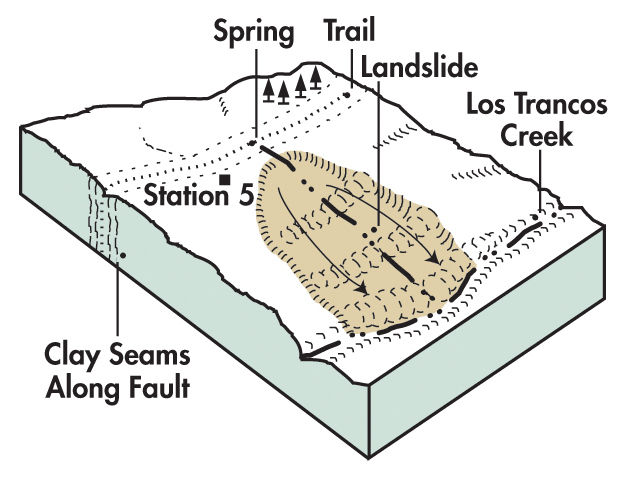Notice the willows and abundant brush to the left of the trail. These plants indicate that there is more water here than in other areas. Springs are often found along faults. As faults move, the rock in the fault is ground into a fine clay called fault gouge. The clay binds the crushed rock together and forms a barrier to the downhill flow of underground water. When underground water hits this clay barrier, the water builds up on the uphill side of the fault and eventually bubbles out of the ground, forming springs or wet spots. When the ground becomes saturated with water, landslides are prone to occur, especially if the ground is shaken by a strong earthquake. You’ll see that the area below the willows is a recovering landslide area. It is covered with poison oak, which often indicates a history of landsliding.
